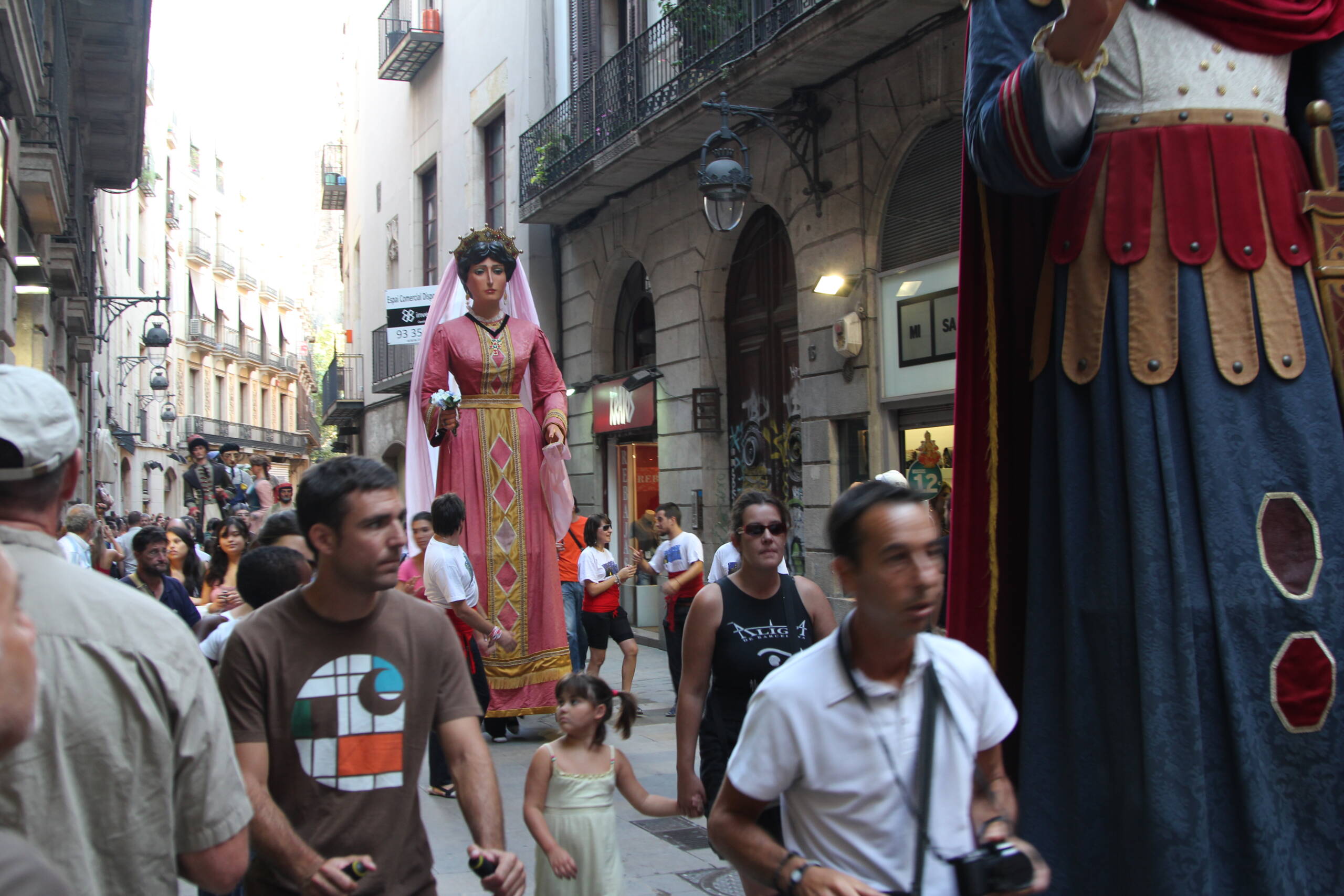Walking through the narrow, sunlit streets of Barcelona, I found myself swept up in a celebration unlike anything I had experienced before. The air buzzed with excitement as people filled every corner of the Gothic Quarter, their laughter and chatter bouncing off the stone façades. Suddenly, towering figures appeared above the crowd—giants, moving gracefully despite their immense size, carried on the shoulders of unseen performers. One, a regal woman dressed in a flowing rose-colored gown with golden embroidery, clutched a delicate bouquet of flowers. Another, a nobleman in a heavy blue and red robe, loomed so large that I could only see his lower half as he turned the corner.

Children craned their necks in awe, some gripping tightly to their parents’ hands, others daring to wave at the towering figures as though they might wave back. The little girl in front of me, wearing a light summer dress, held on tightly to her mother while gazing upward with wide eyes, caught between wonder and disbelief. Around them, people bustled along, some moving quickly as if trying to get ahead of the parade, others content to slow their pace and enjoy the spectacle.
These towering figures are known as gegants, a beloved tradition in Catalonia dating back to the Middle Ages. Originally linked to Corpus Christi processions, they evolved into a festive symbol of civic pride. Each giant typically represents historical or mythical characters—kings, queens, nobles, or even folkloric figures—brought to life during parades and festivals. Behind their grand presence is a local tradition of craftsmanship, as every gegant is carefully built and painted by artisans, then carried by skilled bearers who make them dance through the streets. For Catalans, they are not only entertainment but a living piece of cultural identity, linking communities to centuries of history.
What struck me most was how seamlessly this moment blended into the life of the city. The balconies overhead were filled with onlookers, just as they might be during a quiet evening, but today they leaned forward eagerly to watch tradition march through their streets. Shopkeepers stood at their doors, neighbors greeted one another, and tourists like me tried to capture every detail without missing the feeling of being part of it. It was a reminder that in Barcelona, history and festivity are not separate—both live and breathe in the daily rhythm of its neighborhoods.
As the giants disappeared down the street, their presence lingered, leaving behind a sense of shared celebration. I realized that here, festivals are not just spectacles for outsiders but living traditions deeply woven into the identity of the city. Watching the gegants sway to the beat of distant drums, I understood why Barcelona feels less like a destination and more like a place that welcomes you into its ongoing story.
Leave a Reply